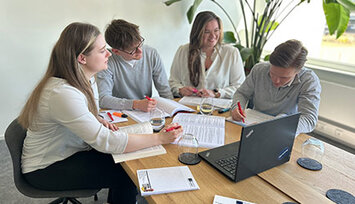We are delighted to announce that Benjamin Backof has been appointed Key Account Manager North with effect from 1 July.
-
Shop
ShopShop
In our shop you will find batteries and battery packs of all types, sizes and capacities.
- Shop entrance
- All products
-
Batteries, accumulators & battery packs
Batteries, accumulators & battery packs
-
Lead batteries
Lead batteries
- Lithium
-
Battery packs
Battery packs
-
Industry cells
Industry cells
-
Rechargeable batteries - Consumer
Rechargeable batteries - Consumer
-
Button cell batteries
Button cell batteries
-
Disposable batteries
Disposable batteries
-
Lead batteries
-
Search by area of application
Search by area of application
- Light electric vehicles
- Energy storage systems & photovoltaics
- Hazard detection systems
- Intralogistics
- Medical Technology
- Mobile video surveillance
- Emergency & safety lighting
- Emergency power batteries and UPS systems
- Smoke and heat extraction systems
- Starter batteries
- Telecommunications
- Wind turbines
- Access control systems
-
Accessories
Accessories
-
Bestsellers
Bestsellers

Our webshop for B2B-Customers
Register in only 2 seconds
- Portfolio
PortfolioPortfolioWe set trends and develop and sell the most modern battery storage systems for many applications.
- Product overview
-
Lead batteries
Lead batteries
-
Standardised energy systems
Standardised energy systems
-
Battery pack development
Battery pack development

Our webshop for B2B-Customers
Register in only 2 seconds
- Applications
ApplicationsApplicationsOur comprehensive range can be used in a variety of industries and application areas.

Our webshop for B2B-Customers
Register in only 2 seconds
- Company
CompanyCompanyFor over 35 years, Battery-Kutter has stood for the production and distribution of batteries, accumulators and battery packs of all kinds.

Our webshop for B2B-Customers
Register in only 2 seconds
- Service
ServiceServiceOur core competence is consulting. We always focus on finding the optimum solution for our customers.

Our webshop for B2B-Customers
Register in only 2 seconds
Contact
Battery-Kutter News
Find out about news from our company and the latest industry news:
![[Translate to English:] Benjamin Backof, neuer Key Account Manager Nord](/fileadmin/_processed_/e/5/csm_Benni-KAM_13f1cd1250.jpg)

Siemens Switzerland AG regularly honours its best suppliers with an award. And we are incredibly proud to announce that Battery-Kutter is one of…

We are delighted to announce that we recently welcomed a new member to the Battery-Kutter Group. LiBrick ESS GmbH specialises in stationary battery…

Thanks to the positive results, we have now been awarded the ‘Hamburg's Best Employer 2025’ seal of approval for the second time.

From 4 to 5 June 2025, Data Centre World, Germany's leading event for the data centre community, will take place at Messe Frankfurt.
We look forward…

CSEM is investing in a drying room for the development and prototyping of innovative batteries that is unique in Switzerland. This new infrastructure…

We are expanding the distribution of our SSB Battery and SUN Battery brands in South-East Europe with the opening of a branch in Athens. We are very…

We are very pleased to inform you that you can now access our new website and our new webshop. Enjoy many advantages, because not only has the design…

At Battery-Kutter, people take centre stage. That is why it is particularly important to us to always support our employees. In the following video,…



